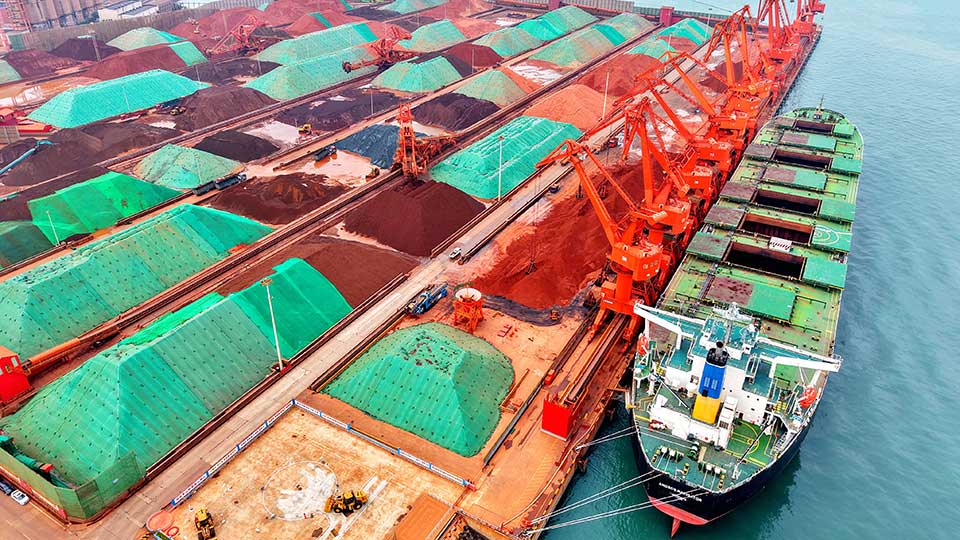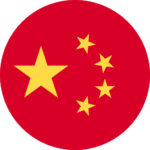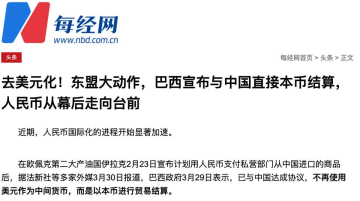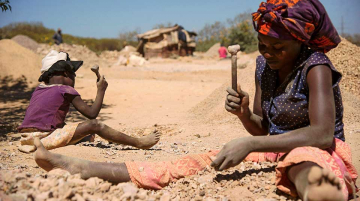
China buys over 70% of the world’s seaborne iron ore—by far the largest share of any country. By simple market logic, the biggest buyer should set the price. Yet for decades, China has had almost no say over pricing, forced instead to accept terms set by foreign mining giants—above all Australia’s BHP and Rio Tinto, and Brazil’s Vale. Now, rising voices on Chinese social media say those days are over.
On September 30, China made its boldest move yet to challenge that system. China Mineral Resources Group (CMRG)—the state-backed centralized iron ore buyer—ordered Chinese steel mills to suspend all U.S. dollar–denominated iron ore purchases from BHP. Cargo ships were reportedly stranded at sea. The reaction online in China was euphoric.
Guancha.cn notes this was not a sudden escalation, but part of a broader campaign. Earlier in September, CMRG had already instructed steel mills to halt purchases of Jimblebar Fines, a BHP product, signaling the start of a pricing confrontation.
According to an analysis by Mining Exchange (矿业汇), a WeChat publication focused on the mining industry, the conflict began with a commercial dispute. BHP’s older Australian mines are being depleted, while output from newer projects has lagged, allegedly reducing ore quality. China demanded a price discount to reflect the lower grade. The two sides failed to agree. BHP, meanwhile, pushed for a new long-term contract that required two conditions: settlement in U.S. dollars and a 15% price increase. Beijing rejected both.
The author continues to reveal a much deeper strategic confrontation lies beneath the commercial disagreement: the global struggle over iron ore pricing power. For two decades, three mining giants—BHP, Rio Tinto, and Vale—have dominated iron ore trade and benchmark pricing, keeping China structurally weak despite being the world’s largest steel producer. At the peak of the 2020–21 commodity boom, iron ore prices soared above $267 per ton, while production costs for Australian miners remained near $10. Profits surged abroad while China’s steel sector survived on margins as thin as 29 yuan per ton.
The author points out Beijing has spent years trying to change that imbalance. In 2022, it established CMRG to pool the purchasing power of over 600 steelmakers, turning China from a fragmented buyer into a unified “super buyer.”
According to the Mining Exchange analysis, China’s new assertiveness is underpinned by two strategic shifts:
1. Diversified and Secure Supply Chains
The author points out China has quietly secured alternative iron ore sources abroad:
- The Simandou mega-iron ore project in Guinea, one of the world’s richest untapped deposits, began trial production on September 14, 2025, with first shipments expected in November.
- Cooperation with Brazil’s Vale continues to deepen, supported by the Chinese-funded Qingkai port, reducing logistics costs. Planned transcontinental rail links will further enhance Brazil’s export capacity to China.
2. RMB Pricing Power
By pushing RMB settlement in commodity trade, China is gradually eroding the dominance of the U.S. dollar in the global resource market. Already, 28% of China–Brazil iron ore trade uses RMB, and multiple African suppliers now accept RMB payments. The move against BHP further isolates dollar-denominated contracts and encourages global miners to adapt to RMB pricing.
Why Is This Important? Is China Really Winning? Chinese online commentary is full of confidence, but may be overlooking two key realities:
- Geopolitics just got complicated: In September, Australia and Papua New Guinea signed a mutual defense agreement, pledging to support each other in case of attack. This marks a growing security alignment against China’s influence in the Pacific, complicating China’s resource diplomacy.
- The “ban” on BHP is not total: Reuters reported this Friday that several BHP cargoes were still sold to China and settled in U.S. dollars. Only shipments from Jimblebar—the mine at the center of the dispute—remain frozen. That suggests China’s move is tactical and selective, not a total embargo. For now, China still needs Australian iron ore.






